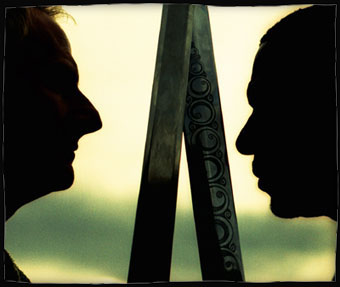

Throughout the medieval world legends told of monsters and dragons, of valiant knights and of maidens in distress, but why do these legends survive? Is it because we can personally relate to what they have to say? Is a legend actually an exaggeration of an original truth? Such is the case with the legend of Robin Hood.
In legend, Robin Hood is England’s greatest archer and the finest leader of men - an outlaw wrongly driven from his lands. Robbing from the rich to give to the poor, he is an inspiration for the downtrodden and oppressed. To those who drop everything to follow him, he is an almost messianic figure whose leadership gives purpose and reason to their hard and bitter lives. The story of Robin Hood has been told the world over for hundreds of years. It has been portrayed in poems, plays and novels for seven centuries, and today it appears in the movies, on TV and even in cartoons. But is it simply a story? Indeed, it sounds very much like the stuff of fantasy and dream. However, behind the tale there is historical truth: a true story just as remarkable and romantic as the medieval myth.
The new discoveries that proved the existence of Robin, Marian and the other Sherwood outlaws instigated even more astonishing historical revelations. The skeleton of the story was fleshed out and the roles that each of the characters played soon became known. Robin was the leader of the Sherwood outlaws, but each character was the center of his or her own universe, spinning an individual web of destiny inseparably linked to the heartbeat of the forest.
Robin was engaged to Elizabeth, but shunned her after meeting Marian – her stepsister. A triangle of love was born: its resolution coming only at the moment that Robin and Elizabeth finally faced their fate. Little John too was an historical figure, but not an oafish ruffian as he is often portrayed, but a witty and intelligent poet who composed the first story of Robin Hood so as to preserve the truth for a future age. As Robin’s lieutenant, he became the counter-balance to his leader’s sometimes impulsive decisions, spawned by his love for Marian. And what of Marian herself? It was she who first led Robin into the celestial maze of another world by discovering the Heart of the Rose - the ancient shrine in the depths of the forest where time and space could not penetrate. Like the eye of the hurricane, a place of calm within a turbulent universe where only the truth exists. A sanctuary guarded by the cosmic joker – the Fool. As the Fool so eloquently puts it himself: “Am I madness and laughter disguised as the truth? Truth is a hard place to be.” Yet this strange madman who rarely speaks is central to the tale. He is outside of time, outside logic and outside existence. He is bound by no universal law. As he tells all who are willing to hear: “You all must enter through me…”
Like the first flowers of spring, why does the story of Robin Hood defy time and renew itself with each retelling? Is it because the characters in the story were flesh and blood and lived and loved just like you and I? Is it because they struggled to conquer their own fears and fight for what their consciences told them was right? Or is it because there is an element of magic and mystery lying just below the surface of the tale – one that still exists just below the surface of the modern world?